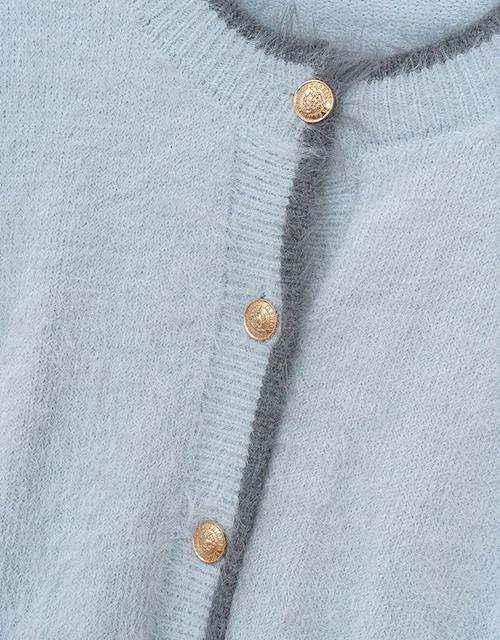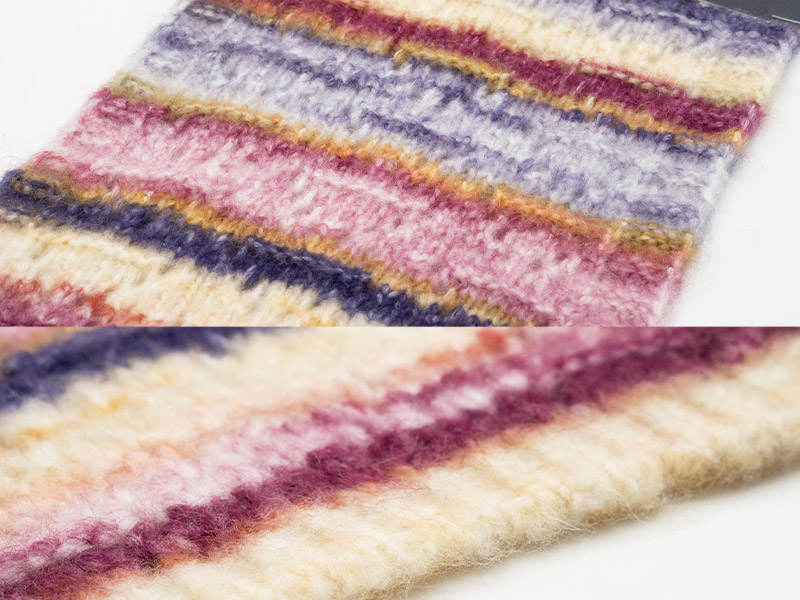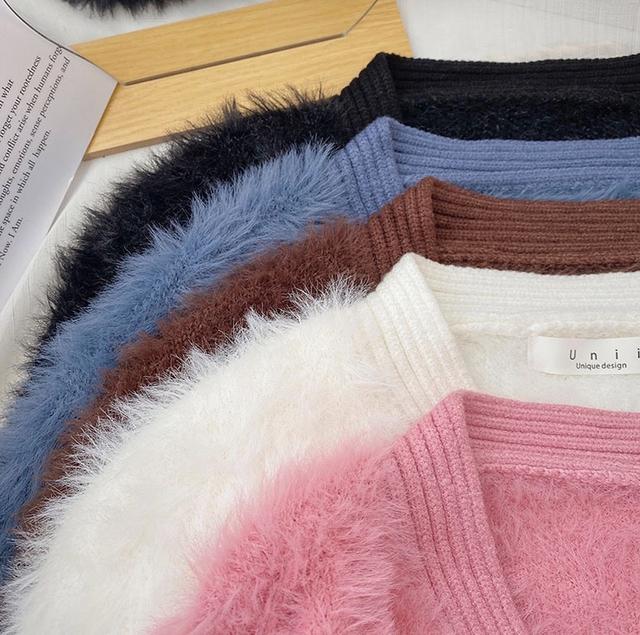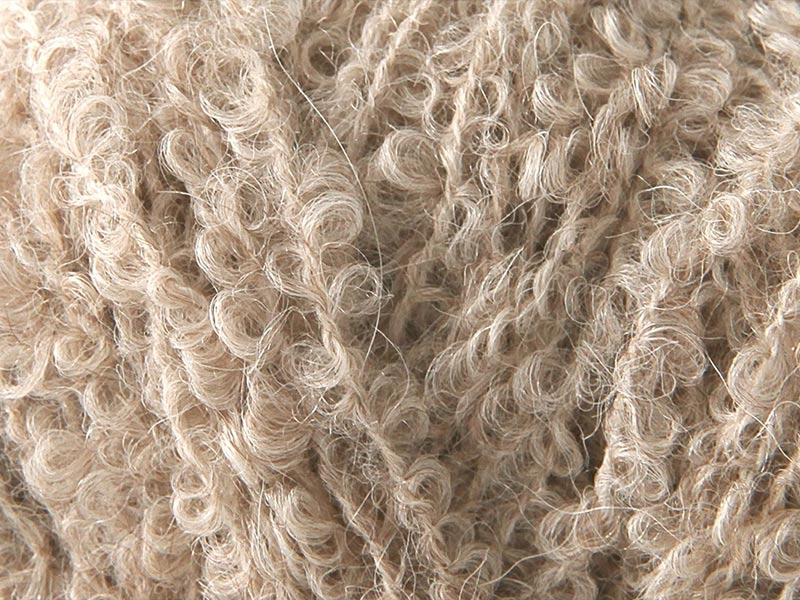A New Sweater Statement: Redefining Fall/Winter Knitwear with Four Unique Yarns
Sweaters are no longer just about “keeping warm” — they’ve become a statement of autumn and winter style.
In the past, the primary function of sweaters was to provide warmth, durability, and practicality, especially in colder regions where they were essential for winter protection. However, today’s consumer trends have quietly shifted — while functionality remains important, design and style expression have become equally indispensable.
Why Have Sweaters Become Increasingly Fashionable?
Changing Social Pace: From Functionality to a Return to Lifestyle Aesthetics
As living standards improve, consumers are no longer satisfied with the basic need of “just something to wear” — they increasingly care about whether their clothing reflects a sense of style. The focus has gradually shifted from efficiency-driven choices to an appreciation for quality living and aesthetic experiences. Even in daily scenarios like commuting or staying at home, people want their outfits to express their personal taste.
— As a wardrobe staple in autumn and winter, the sweater naturally becomes a key vehicle for showcasing texture, refinement, and lifestyle aesthetics.
Elevated Humanistic Values: Clothing as Expression, Style as Attitude
Today’s consumers are increasingly embracing the idea that “what you wear is how you express yourself.” They use fashion to convey emotions, attitudes, beliefs — even a sense of identity. Sweaters, with their soft textures, versatile silhouettes, and full-body coverage, have become an ideal medium for expressing feelings like warmth, healing, uniqueness, and freedom.
— For example, soft and fluffy sweaters evoke a sense of comfort and healing; heavy wool textures create a nostalgic, vintage atmosphere; and bold, high-contrast yarn combinations speak to individuality and self-expression.
Aesthetic Upgrade: From Flat Clothing to a Pursuit of Dimensional Visual and Tactile Experiences
As Gen Z and Millennials become the dominant consumer groups, their sensitivity to both visual and tactile experiences is more pronounced. They favor pieces that come with emotional undertones, rich textures, and strong design aesthetics.
— Traditional flat-knit structures no longer meet their expectations. Instead, sweaters made with fancy yarns — offering more dimension, texture, and visual depth — have become the new trend focus.
Mindset Shift: The Pursuit of Sustainability, Differentiation, and Personal Identity Drives a New Design Language
The new generation of consumers is not just “buying a sweater” — they are “choosing a set of values.” They seek: Distinctive and unique design details
Sustainable or nature-inspired materials
A personal way of expression that resists blind trends
— As a result, designers and brands are actively searching for yarns that can “tell a story,” emphasizing the idea that “fabric is design.” Yarn becomes the very first layer — the soul — of a sweater’s identity.
The Evolution of Sweater Styles Fuels the Rise of “Specialty Yarns”
Driven by the trends above, the market’s demand for specialty yarns has surged — moving beyond basic cotton or wool to embrace yarns with visual impact, tactile variation, and emotional expression. Yarns like feather yarn, mink yarn,sanded yarn, and spray yarn are becoming key materials in fashion innovation.
These yarns offer not only distinctive textures and appearances, but also empower designers to:
- Simplify garment structure while enhancing overall effect
- Create depth and layering without relying on patterns
- Achieve true design differentiation
- Adapt to a variety of styles — from cute and cozy, to minimalist, vintage, or urban chic
The Key to Stylish Sweater Design: Recommended Specialty Yarns
Driven by the concept that “yarn is the language of style,” the following four categories of fancy yarns have become go-to choices for knitwear brands and designers alike. These yarns offer innovation across visual appeal, tactile sensation, texture, and expressive power — perfectly aligning with consumers’ desire for sweaters that feel both unique and comforting.
Would you like me to help expand each yarn category with English names, characteristics, and ideal applications?

Feather Yarn: Airy & Soft-Focus — Light, Dreamy, and Delicate
Key Features
- Covered with feather-like fibers of varying lengths, creating a fluffy, irregular surface texture
- Ultra-lightweight and breathable, with a soft, cloud-like appearance that evokes an “airy atmosphere”
- Takes dye beautifully, resulting in rich color gradients and dynamic light-and-shadow effects
Recommended Sweater Styles
-
French-inspired soft knits
-
Relaxed, cozy Japanese aesthetics
-
Sweet-meets-edgy looks for younger consumers
Perfect for: oversized pullovers, puff-sleeve sweaters, fuzzy knit vests, and more.
Why It Works
Feather yarn acts like a dreamy visual filter — even with simple silhouettes and plain stitches, the material alone creates a memorable impression. Ideal for autumn and winter collections that aim to be comforting, weightless, and emotionally resonant, while breaking away from the stereotype of bulky knitwear.
Imitation Mink Yarn: Luxurious & Skin-Friendly — Subtle Sophistication at Its Finest
Key Features
- Densely packed surface fibers mimic real mink, offering a smooth, silky texture with a natural sheen
- Velvety soft to the touch, gentle on the skin, with no itchiness
- Clean, minimal appearance — yet effortlessly exudes a refined, premium look
Recommended Sweater Styles
-
Urban minimal-luxury pieces
-
Clean-cut officewear essentials
-
Elegant Korean-inspired knitwear
Perfect for: turtleneck base layers, cropped cardigans, soft-touch short-sleeve knits.
Why It Works
Imitation mink yarn has become the go-to material for elevated everyday knits — especially premium base layers for work and city life. It offers both softness and sophistication, and pairs beautifully with materials like leather, satin, or velvet. A perfect fit for knitwear brands targeting the mid-to-high-end market.
Spray Yarn: Lightweight Warmth with a Tech-Infused Feel
Key Features
-
Produced using an air-blown spinning technique, where ultra-fine fibers are blown into a tubular mesh to create a hollow-core structure
-
Excellent heat retention with minimal weight, and resistant to shedding
-
Fluffy yet durable handfeel — holds its shape well and resists pilling
Recommended Sweater Styles
-
Nordic-inspired minimalist looks
-
Gender-neutral or street-cool aesthetics
- Outdoor and techwear-inspired knitwear
Perfect for: turtleneck pullovers, oversized silhouettes, and soft next-to-skin base layers.
Why It Works
Blown yarn strikes a perfect balance between innovation and comfort, meeting the modern consumer’s dual demand for lightness and warmth. With a strong sense of technical craftsmanship, it’s ideal for brands that emphasize tech-driven sustainability and makes a great material choice for fall/winter collection development.
Sanded Yarn: Soft, Nostalgic, and Comforting
Key Features
-
Undergoes a post-spinning brushing process to create a fine layer of surface fuzz
-
Naturally soft and warm to the touch, subtle rather than overly fluffy
-
Evokes a gentle, vintage-inspired visual feel, with a sense of time and warmth
Recommended Sweater Styles
-
Retro literary looks
-
Preppy or collegiate styles
- Whimsical parent-child or playful knitwear
Perfect for: crewneck sweaters in vintage tones, couples’ knits, and soft-color contrast designs.
Why It Works
Brushed yarn is ideal for creating sweaters that look gentle and feel emotionally rich. It helps style-driven brands build an emotionally resonant product line, especially appealing to consumers drawn to Japanese aesthetics, retro design, and artisanal, storytelling knitwear.
Conclusion
In today’s rapidly evolving fashion landscape, sweaters are no longer just practical garments for warmth — they have become key pieces for expressing personal style, taste, and emotional tone. As consumers place increasing value on visual texture, tactile richness, and unique materials, the demand for distinctive yarns has grown stronger than ever.
Feather Yarn, Imitation Mink Yarn, Blown Yarn, and Brushed Yarn — these four specialty yarns offer exceptional aesthetic appeal and textural depth. Each has its own character, yet they can be easily combined to give designers greater flexibility and creative power. These yarns allow sweater products to stand out not just in design but also in the market, helping brands deliver a strong visual identity, creative distinction, and deep emotional connection with the new generation of consumers.
Related News
Discover more about the latest developments in the yarn industry, explore articles on development trends and innovative technologies, and provide you with more industry insights.

Wool Acrylic Blend Yarn: Benefits, Uses & Wholesale Sourcing Guide
The choice of fiber in the textile industry affects not only the quality of the finished product, but also how well it works, how much it costs, and how much people want to buy it. Wool and acrylic are two of the most popular fibers, and each has its own benefits. Wool is known for being warm, strong, and breathable, while acrylic is known for being strong, cheap, and easy to care for.

Mink yarn, also known as faux mink yarn or imitation mink yarn, is a type of fancy yarn that mimics the luxurious texture and visual appeal of natural mink fur—without using any animal materials. It’s soft, fluffy, smooth, and often has a beautiful sheen, making it ideal for creating high-end fashion items and cozy textiles. But what exactly is mink yarn, and why is it gaining popularity in the textile and knitting industries? Let’s explore everything you need to know about this fascinating fancy yarn.

The Secret Behind “Fuzzy Yarns”: How Different Fancy Yarns Make Soft, Fluffy Textures
In the fall and winter, nothing feels warmer or more welcoming than yarns with a soft, fuzzy touch. These “hairy” fancy yarns not only add warmth to any fabric, but they also give it a sense of texture, depth, and life. But how do these fluffy effects happen?
Let’s take a closer look at five common types of fuzzy fancy yarns: crochet yarn, blowing yarn, raised yarn, sueded yarn, and bouclé yarn. We’ll talk about how each one gets its unique surface effect, how comfortable it is, how much it costs, and what it’s good for.This guide will show you the best types of yarn to use for summer projects, compare their features, and give you some fun ideas for your next collection or DIY project.

